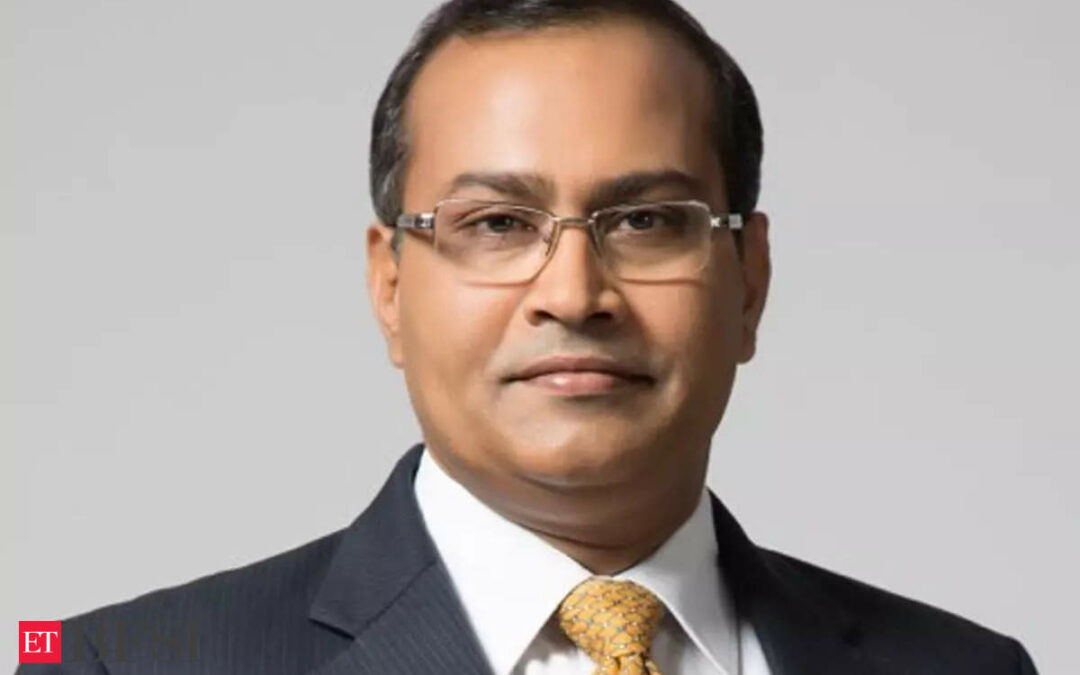“Primary industries like steel and cement capex will likely make a decisive move post-general election, adding to the ongoing incentives-led capex,” says Rajesh Cheruvu, Managing Director and Chief Investment Officer at LGT Wealth India.
In an interview with ETMarkets, Cheruvu said: “Investors with suitable risk profiles could consider overweight positions in Pvt Banks, Large Cap-IT, Pharma-API, and FMCG segments,”. Edited excerpts:
As we step into FY25 – how do you see markets in the next financial year? Do you see a double-digit return?Rajesh Cheruvu: After a strong FY24, expecting successive years of such returns is challenging, as equity markets do not move linearly.However, with the widely expected rate cuts from most global central banks, FPI flows will likely be healthier in FY 25.
Also, primary industries like steel and cement capex will likely take a decisive move post-general election, adding to the ongoing incentives-led capex.
Initial indications of a reversal trend of ‘El-Nino’ could augur well for the revival in rural consumption.
A combination of these factors, domestic economic and earnings growth is likely to keep the market momentum in positive territory.
In terms of earnings – how do you see India Inc. faring in FY25? P/E multiple has expanded but there is a lot of catch-up which earnings have to do. Do you see earnings recovery in FY25 especially in the small & midcaps space?
Rajesh Cheruvu: PE multiples of Indian mid and small companies have gone through rerating in the past few quarters.
Sustained domestic participation in equities coinciding with the formalization of businesses post-pandemic has helped attract interest in mid & small-sized firms.
This has helped many companies graduate from smaller sizes and liquidity levels to reasonable levels to attract a newfound interest from FPIs.
The combination of these factors expanded their multiples and reduced the cost of capital. The spurt in their valuations has been justified so far by their earnings expansion.
As we advance, we are less likely to see such broad-based earnings growth, making it difficult to justify such multiples. From here on, we expect bottom-up selection and active portfolio management to be the rules of the game.
If someone with a high-risk profile plans to deploy Rs 10 Lakh in FY25 – what would be the ideal sectoral allocation in his/her equity portfolio?Rajesh Cheruvu: The banking and Financial Services sector underperformed in FY 24, but we expect stronger credit growth and rate cuts, which augur well for their profitability.
The IT sector and Pharma API manufacturers suffered in the past two years with weaker discretionary spending due to elevated interest rates in the developed world, and both segments are expected to see a recovery in demand with the start of rate easing.
Improvement in rural spending post-monsoons could help consumer demand recover. Investors with suitable risk profiles could consider overweight positions in private banks, Largecap IT, pharma-API and FMCG segments.
How are you looking at gold in the next FY?
Rajesh Cheruvu: As an asset class, gold is supposed to offer a hedge against geopolitical risks and inflation. Persisting geopolitical events and higher-than-target inflation in most of the Western world will likely keep it in focus.
Global central banks’ impending monetary stance change in H2 CY 25 could further augur well in lessening the opportunity cost of holding Gold. Hence, we maintain a positive stance on Gold in portfolios.
What would be the ideal asset allocation looking at the domestic and global factors in the next financial year assuming someone is in the age bracket of 30-40 years?
Rajesh Cheruvu: We suggest that individual asset allocation be ascertained based on multiple factors, such as income levels, cash flows, age, dependent family members, investment objectives, expenditure patterns, etc.
Hence, making an allocation decision based on only age might not help determine a person’s risk appetite and return needs.
FIIs took a back seat in FY24 – how do you see foreign investors positioning themselves in FY25? What is holding them back?
Rajesh Cheruvu: It is difficult to call when global flows could turn. However, the rising cost of capital in the developed world and the performance of developed market equities appear to have outweighed their outflows.
The consensus view of easing monetary stance by key global central banks later in the year, combined with the clarity around domestic policy continuity post-elections, will likely improve the outlook for FPI flows.
Will FY25 be another blockbuster year for IPOs? We saw many SME IPOs but not many mainboard IPOs hitting D-Street. Any specific reason for this mismatch?
Rajesh Cheruvu: Many PE funds will likely mature in the next few quarters, which we expect will lead to new listings. Compared to peer markets against the flood of domestic liquidity, the limited supply of paper leads to rich market valuations.
New issuances and increased free float are essential for the sustained equity rally and steady investor returns.
There is a lot of talk around valuations which have turned slightly expensive compared to peers. Is that something that is a sign of caution for investors in the new FY?
Rajesh Cheruvu: Indian markets are trading at rich multiples owing to superior growth led by multiple structural growth factors. Also, the return ratios of Indian markets used to be upwards of 20% in 2007, but they went down as low as 10% in the last decade.
In recent times, they have shown a stronger recovery. The leverage ratios of Indian companies are significantly below trend levels. A combination of superior growth, profitability, and solvency could keep market-wide multiples elevated.
However, investors should ensure a margin of safety while taking fresh exposures. Also, we suggest caution and lightening their positions with any signs of weakness in earnings growth, as multiple compressions could be severe in such a scenario.
(Disclaimer: Recommendations, suggestions, views, and opinions given by experts are their own. These do not represent the views of the Economic Times)










